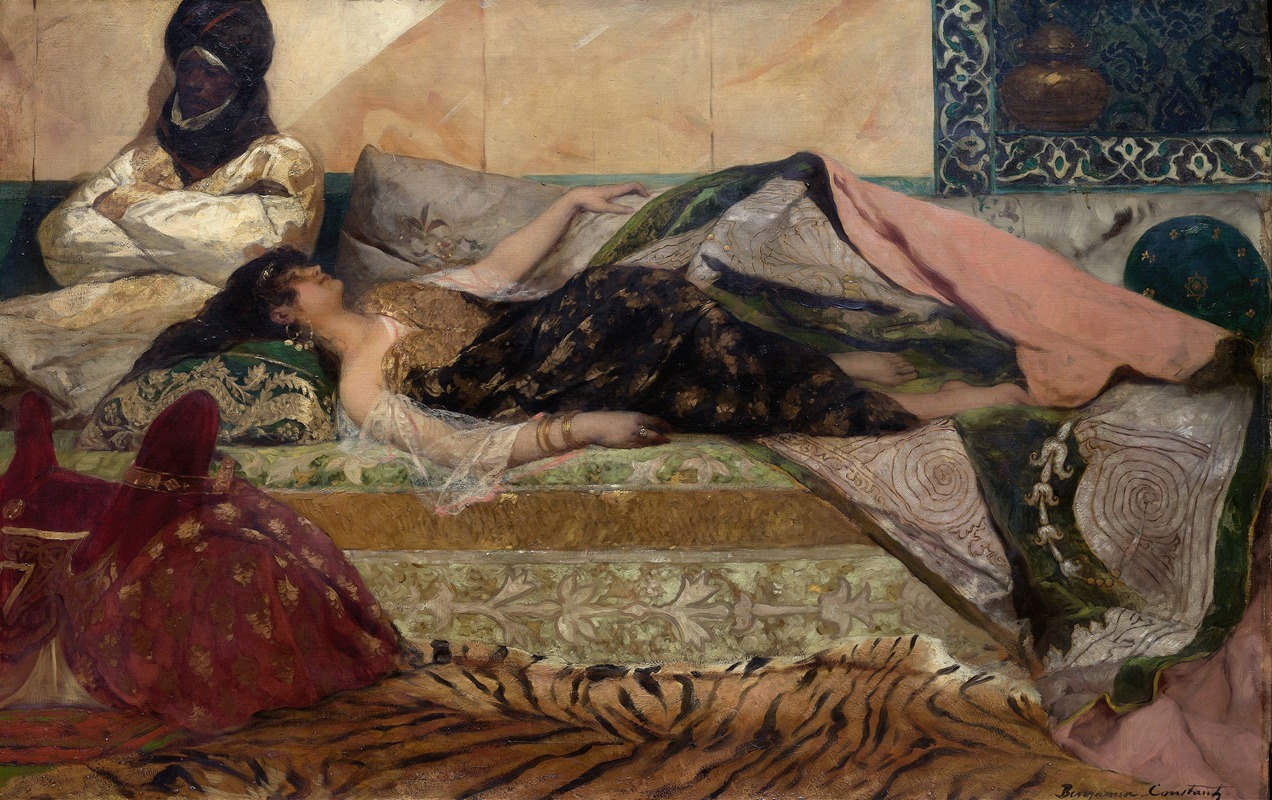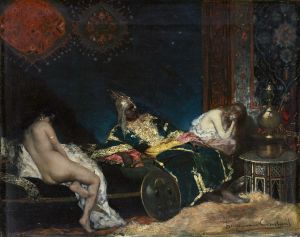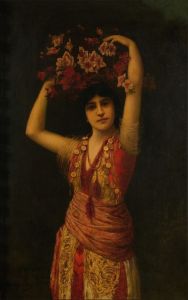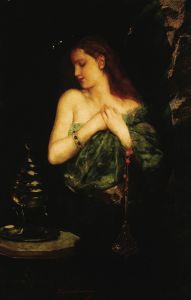
Odalisque
A hand-painted replica of Jean-Joseph-Benjamin Constant’s masterpiece Odalisque, meticulously crafted by professional artists to capture the true essence of the original. Each piece is created with museum-quality canvas and rare mineral pigments, carefully painted by experienced artists with delicate brushstrokes and rich, layered colors to perfectly recreate the texture of the original artwork. Unlike machine-printed reproductions, this hand-painted version brings the painting to life, infused with the artist’s emotions and skill in every stroke. Whether for personal collection or home decoration, it instantly elevates the artistic atmosphere of any space.
Jean-Joseph-Benjamin Constant's painting Odalisque is a notable example of 19th-century Orientalist art. Benjamin-Constant (1845–1902) was a French painter and decorative artist known for his fascination with the cultures of the Middle East and North Africa, which he explored through his travels and artistic works. His paintings often depicted exotic and opulent scenes, reflecting the European fascination with the "Orient" during this period.
Odalisque portrays a reclining woman, often associated with the harem culture of the Ottoman Empire. The term "odalisque" historically referred to a female servant or concubine in a harem, though in Western art, it became a broader symbol of sensuality and exoticism. In this painting, Benjamin-Constant captures the subject with rich detail and vibrant colors, emphasizing the luxurious fabrics, intricate patterns, and the overall atmosphere of indulgence and mystery.
The composition of Odalisque reflects the artist's skill in rendering textures and light. The woman's pose, combined with the sumptuous surroundings, creates a sense of intimacy and allure. The painting demonstrates Benjamin-Constant's ability to blend realism with an idealized vision of the "Orient," a hallmark of Orientalist art. His works, including Odalisque, were influenced by his travels to Morocco and other regions, where he studied local customs, architecture, and clothing, incorporating these elements into his art.
Benjamin-Constant's Odalisque aligns with the broader Orientalist movement, which was prominent in 19th-century European art and literature. This movement often romanticized and exoticized Eastern cultures, reflecting both admiration and a colonialist perspective. While Orientalist art has been critiqued for its stereotypical and often inaccurate portrayals, it remains an important historical record of how the East was perceived by Western artists of the time.
The exact date of creation for Odalisque is not definitively documented, but it is consistent with Benjamin-Constant's body of work from the late 19th century. The painting is housed in a private collection or museum, though specific details about its current location are not widely available.
Jean-Joseph-Benjamin Constant's Odalisque continues to be studied and appreciated for its artistic qualities and as a representation of the Orientalist genre. It serves as a window into the cultural and artistic exchanges of the 19th century, as well as the complexities of how different cultures were viewed and depicted in European art.


















